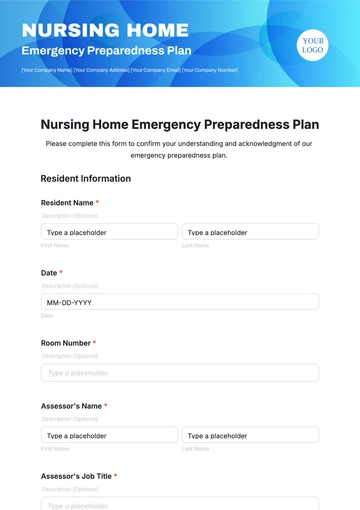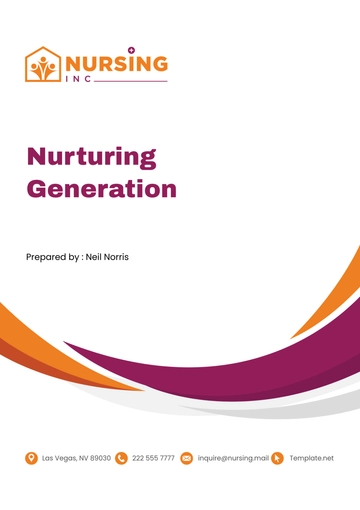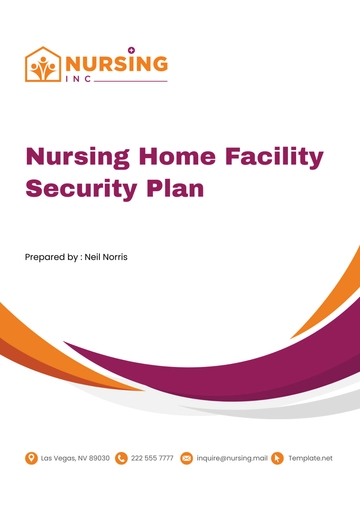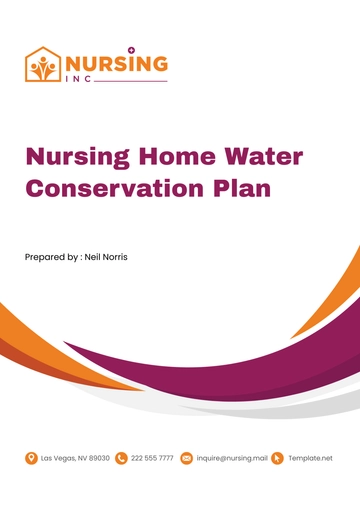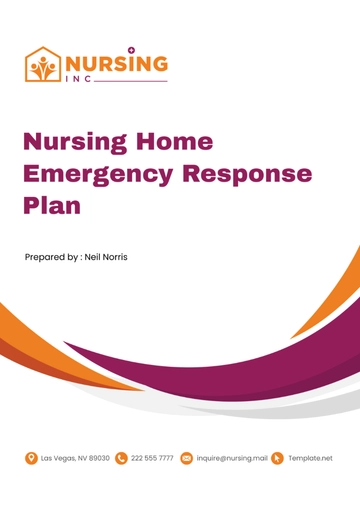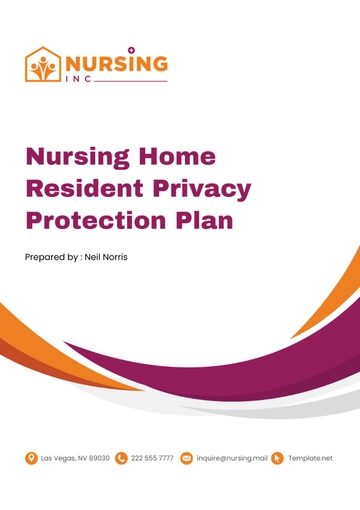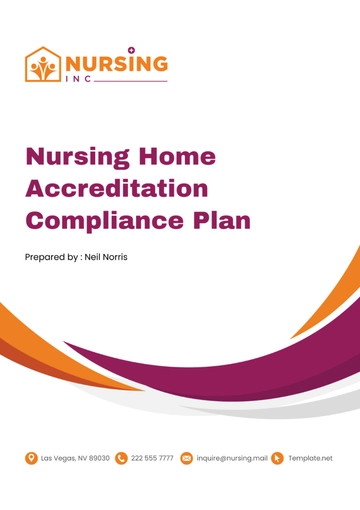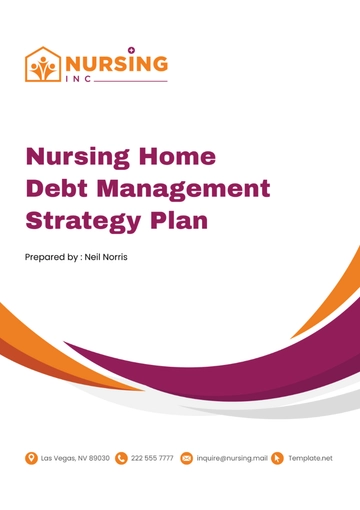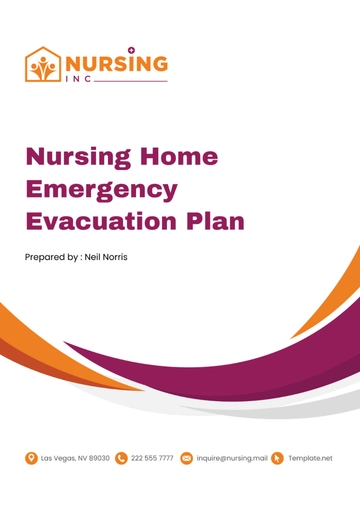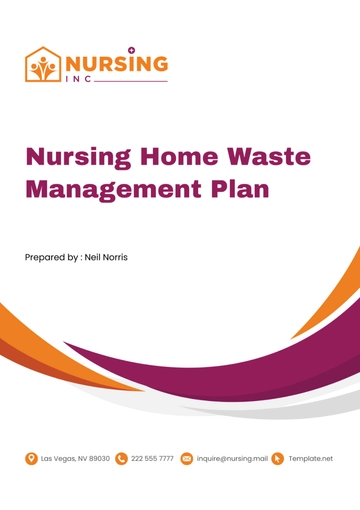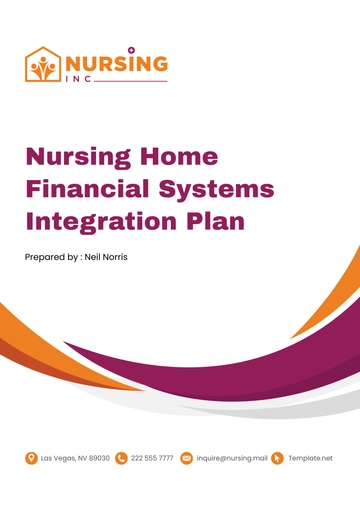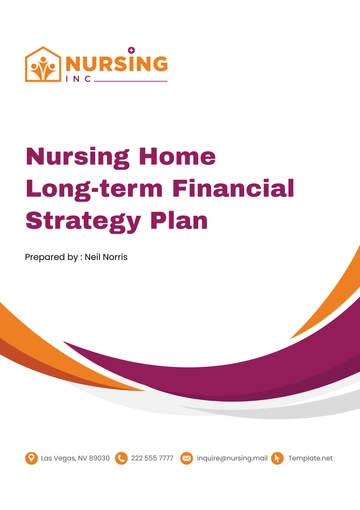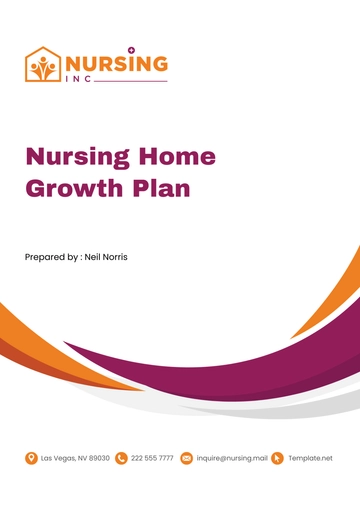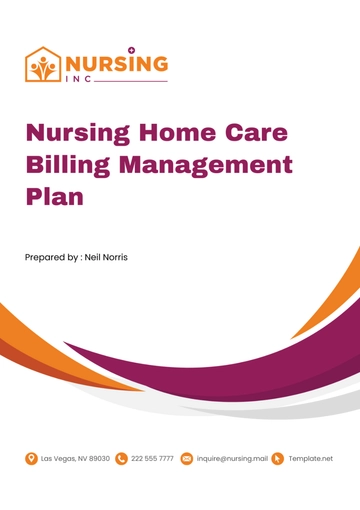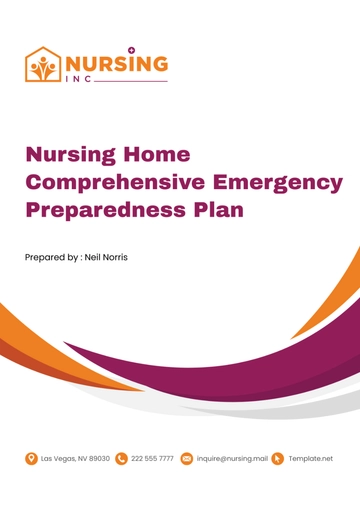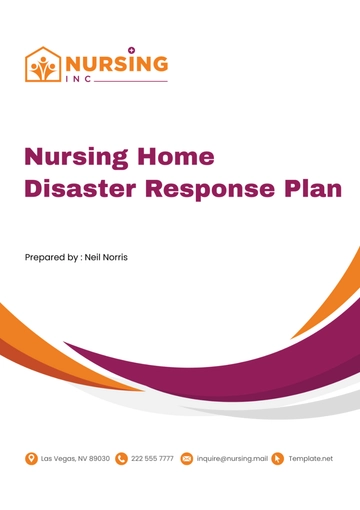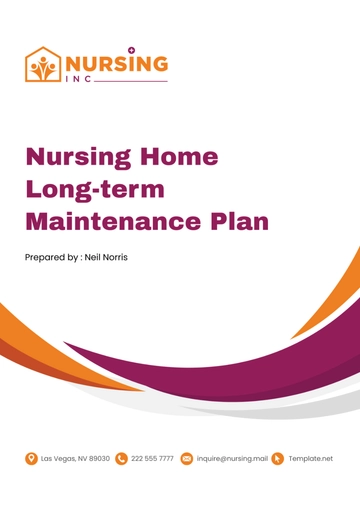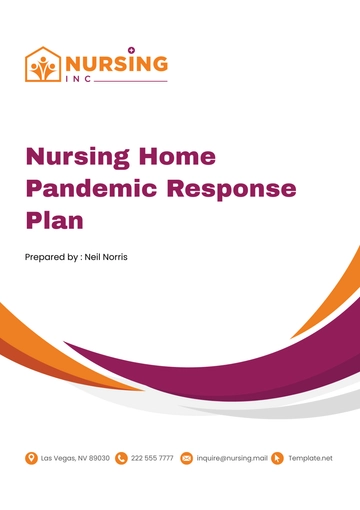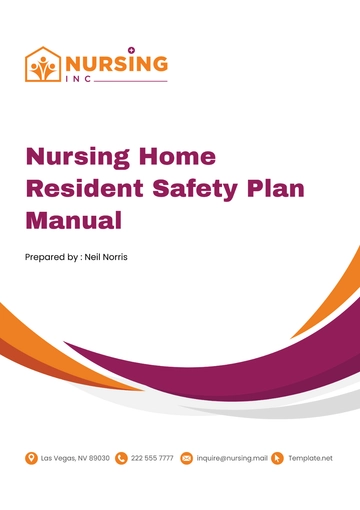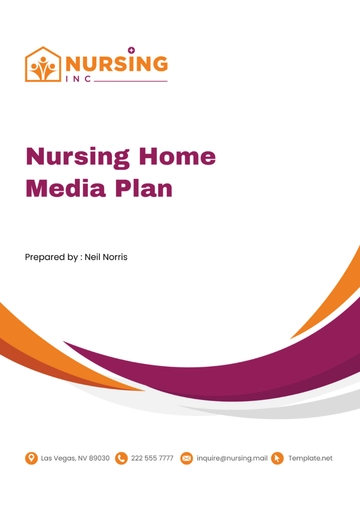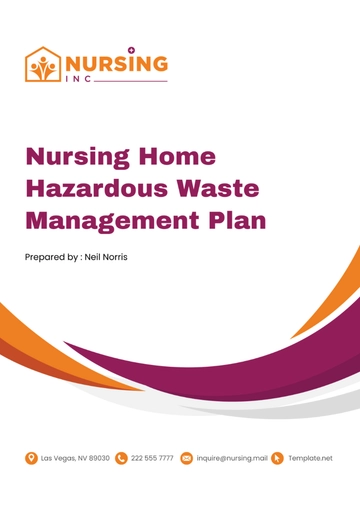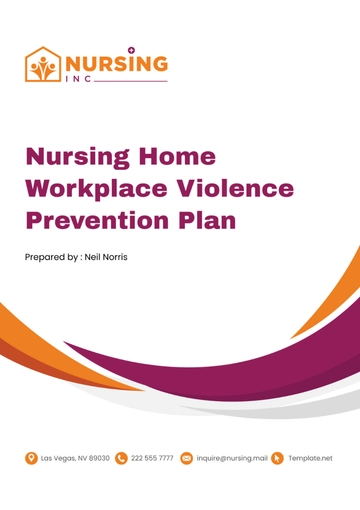Free Nursing Home Facility Security Plan
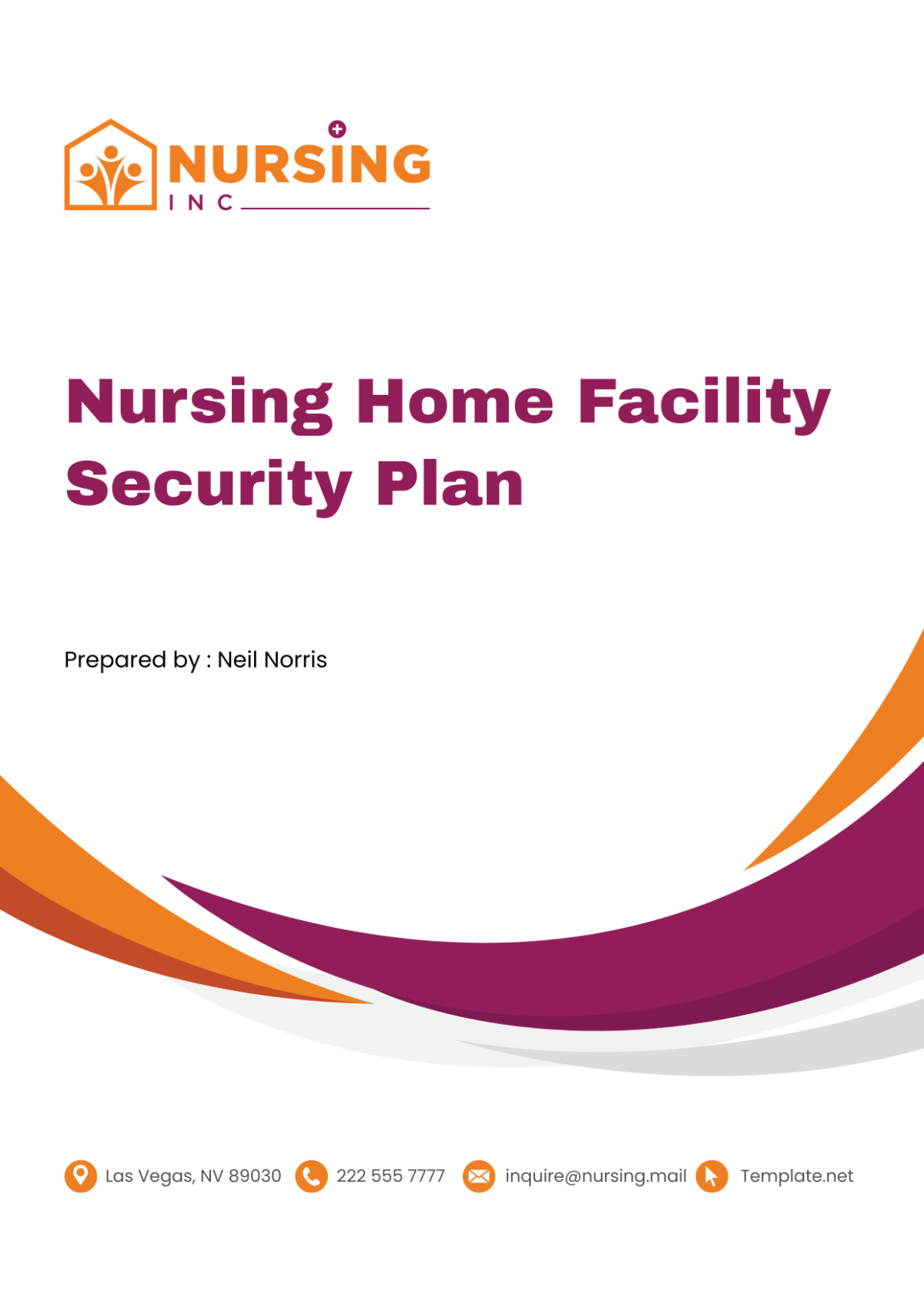
1. Executive Summary
At [Your Company Name], the Nursing Home Facility Security Plan is crafted with the utmost dedication to ensure the safety and security of our residents, their families, and our staff. Our comprehensive strategy is built on a foundation of rigorous physical security measures, strict protocols, and extensive personnel training to address and mitigate a wide range of potential threats and vulnerabilities. This proactive approach is vital in maintaining a secure environment that not only protects but also enhances the quality of life and community spirit within the facility. By integrating state-of-the-art security technologies with human oversight, we create a robust defense against any security challenges, ensuring peace of mind for all stakeholders involved. This plan is a testament to our commitment to providing a safe, secure, and nurturing environment, reflecting our core values of care and vigilance in every aspect of our operations.
2. Objectives
The security objectives at [Your Company Name] are strategically formulated to encompass all aspects of our facility's safety, emphasizing a proactive and comprehensive approach to security management:
Personal Safety Assurance: We prioritize the safety of all individuals within our premises by implementing cutting-edge security measures and protocols. From real-time surveillance systems to emergency response procedures, every tool and policy is designed to safeguard our residents, visitors, and staff against any potential harm.
Risk Reduction through Controlled Access: By installing advanced access control systems, we significantly reduce the risk of unauthorized entry and other security breaches. These systems are complemented by continuous monitoring, ensuring that all areas of our facility are protected against theft and unauthorized access.
Effective Incident Response: Our security team is trained to react swiftly and efficiently in the event of a security breach. With predefined response strategies and regular drills, our staff is always prepared to handle emergencies, minimizing impact and swiftly restoring safety.
Round-the-Clock Vigilance: We employ a combination of manned security and technological solutions to maintain vigilance at all times. This 24/7 monitoring is critical in preempting potential security issues and addressing them before they escalate.
Ongoing Security Education: We conduct regular training sessions for our staff and residents to ensure they are well-informed about our security protocols and how they can contribute to a safer environment. These sessions also serve to enhance their readiness to respond effectively to any potential security threats.
3. Risk Assessment
Our comprehensive risk assessment protocol is a cornerstone of our security strategy, ensuring that all potential threats are identified, analyzed, and mitigated. The process involves:
Threat Identification: Our security team uses advanced tools and methodologies to identify potential security threats. This continuous process involves the analysis of historical data, trends, and intelligence gathering to anticipate and prepare for possible security challenges.
Vulnerability Evaluation: Through regular audits and security checks, we assess the vulnerabilities in our physical infrastructure and operational procedures. This evaluation helps us pinpoint weaknesses that may be exploited and requires immediate attention.
Impact Analysis: We quantify the potential impacts of identified threats, considering both the direct and indirect consequences on our facility's operations and the well-being of our residents and staff. This analysis is critical in prioritizing the risks that pose the greatest threat.
High-Risk Area and Time Determination: By analyzing data collected through surveillance and past incidents, we identify high-risk areas and times. This information is crucial for implementing targeted security measures that are more efficient and effective.
Preventive and Corrective Measures Development: Armed with comprehensive risk assessments, we formulate and prioritize a list of preventive and corrective actions. These measures are tailored to address specific risks and are integrated into our overall security plan, ensuring adaptive and responsive strategies that evolve with changing security dynamics.
This expanded content for the Executive Summary, Objectives, and Risk Assessment sections provides a more detailed and strategic insight into the planning and operational aspects of the security measures at [Your Company Name], ensuring alignment with the facility's overarching goals of safety and security.
4. Physical Security Measures
At [Your Company Name], we recognize the critical role of physical security measures in maintaining a safe and secure environment. Each measure is carefully chosen to address specific security needs, providing a robust defense against potential threats. Below is a detailed overview of the physical security measures we will implement:
Table: Detailed Physical Security Measures
Measure | Objective |
|---|---|
Surveillance cameras | Provide continuous monitoring and recording of all areas to deter and document unauthorized activities. |
Security doors & walls | Create robust barriers to prevent unauthorized access. |
Alarm system | Deliver immediate alerts for unauthorized access or emergencies to prompt a swift security response. |
Safety boxes | Offer secure storage for residents’ valuables, ensuring peace of mind. |
Security lighting | Enhance visibility and security during nighttime and low-light conditions. |
Each of these measures is integrated into our overall security framework to create a seamless and effective security envelope around our facility. Surveillance cameras are strategically placed to cover all areas, providing a continuous oversight that helps prevent incidents before they occur. Security doors and reinforced walls form a physical barrier, controlling access and deterring unauthorized entry. Alarm systems are calibrated for quick detection of breaches, ensuring rapid response to any security threat. Safety boxes in resident rooms safeguard personal valuables, contributing to a sense of security and privacy. Enhanced security lighting improves visibility, making our facility a hard target for any unauthorized activities during vulnerable hours.
5. Personnel Security
Ensuring the integrity and reliability of our staff is paramount at [Your Company Name]. We implement rigorous personnel security measures to create a trustworthy and secure workforce:
Comprehensive Background Checks: All potential employees undergo thorough background investigations before their employment confirmation to ensure they meet our high standards for security and trustworthiness.
Ongoing Security Training: We provide continuous training on the latest security practices and emergency response techniques. This ensures that our staff is not only aware of but proficient in handling and mitigating any security issues that may arise.
Regular Security Briefings: Staff receive updates on emerging threats and procedural changes during regular security briefings. This keeps our team informed and prepared, reinforcing our proactive stance on security.
These measures are designed to maintain a high level of readiness and ensure that all staff members are equipped to contribute to our security goals actively.
6. Visitor Management
Visitor management is a critical component of our security strategy at [Your Company Name]. Our protocol includes:
Mandatory Sign-in Process: All visitors are required to sign in and present photo identification upon arrival. This helps us maintain a record of everyone entering the facility, enhancing our ability to monitor and control access.
Visitor Badges: Issued at the point of entry, visitor badges must be worn at all times within the facility. This helps staff and security personnel quickly identify authorized visitors and ensure that they access only appropriate areas.
Designated Private Visiting Areas: These areas allow for privacy while maintaining the overall security of the facility. They are monitored to ensure that interactions remain safe and within security guidelines.
7. Emergency Response Plan
Our emergency response plan is comprehensive, designed to ensure that [Your Company Name] can effectively manage a variety of emergency situations:
Emergency Procedures: Detailed plans for responding to fires, medical emergencies, and natural disasters are established, outlining roles and responsibilities for all staff.
Regular Drills: Conducted regularly, these drills ensure that both staff and residents are familiar with emergency procedures, reducing panic and enhancing the effectiveness of our response.
Coordination with Local Emergency Services: We maintain strong partnerships with local fire departments, hospitals, and police services. This collaboration ensures a rapid and coordinated response in the event of a major emergency.
Together, these elements form a comprehensive strategy to protect all individuals in our care and maintain the integrity of our facility against both internal and external threats. This careful planning and detailed approach to security underline our commitment to creating a safe and secure environment at [Your Company Name].
8. Cybersecurity Measures
At [Your Company Name], safeguarding the sensitive data of our residents and ensuring the integrity of our digital infrastructure is of paramount importance. To this end, we are committed to implementing robust cybersecurity measures that align with industry best practices and regulatory standards:
State-of-the-art Firewalls and Network Security: We will deploy advanced firewall technologies and secure network protocols that create a formidable barrier against unauthorized access. These systems will be configured to detect and thwart potential intrusions in real-time.
Comprehensive Access Controls: To protect sensitive information, access will be tightly controlled and limited strictly to authorized personnel. We will employ multi-factor authentication, role-based access controls, and regular audits of access logs to ensure compliance and detect any irregular activity promptly.
Regular Cybersecurity Training: Recognizing that human factors often represent the greatest vulnerability, we will conduct regular and mandatory cybersecurity training for all staff. These sessions will focus on recognizing phishing attempts, safe handling of patient data, and immediate reporting of suspicious activities. The training will be updated continually to reflect the latest cyber threat landscapes and defense tactics.
These cybersecurity initiatives are designed not only to protect against external threats but also to fortify our defenses from within, ensuring that our network remains impregnable and our data integrity uncompromised.
9. Security Training and Awareness
To foster a culture of security awareness and preparedness within [Your Company Name], we will implement a comprehensive security training and awareness program. This program will serve as a cornerstone of our overall security strategy, designed to empower our staff and residents with the knowledge and skills needed to contribute effectively to our security efforts:
Regular, Structured Training Sessions: Both staff and residents will participate in regular training sessions that cover security protocols, emergency procedures, and personal safety tips. These sessions will be tailored to the specific needs and roles of participants, ensuring relevance and engagement.
Educational Materials and Updates: We will distribute clear, user-friendly educational materials that outline best practices in security. Regular newsletters and updates on security practices will be provided to keep everyone informed of new threats and the latest security enhancements.
Engaging Drills and Simulations: To test and reinforce the practical application of learned security measures, we will conduct regular drills and simulations. These exercises will simulate various security scenarios, helping to instill calm and measured responses in actual emergency situations.
Through these targeted training initiatives, we aim to elevate the security intelligence of our community, making each member a proactive participant in safeguarding the facility.
10. Review and Improvement
To ensure that our security measures remain at the forefront of industry standards and are responsive to evolving threats, [Your Company Name] will engage in continuous review and improvement of our security practices:
Periodic Auditing: Our security team will conduct regular audits of all security practices and infrastructure. These audits will help identify any vulnerabilities or areas of non-compliance and will serve as a basis for making informed updates to our security strategies.
Performance Metrics Tracking: We will establish and monitor key performance metrics related to security incidents, response times, and staff compliance. This data will provide insights into the effectiveness of our current security measures and highlight areas for enhancement.
Regular Review Processes: Security protocols will be regularly reviewed and updated based on the outcomes of audits, the latest security trends, and feedback from staff and residents. This dynamic approach ensures our security practices remain adaptive and effective, aligning with both technological advancements and changing threat landscapes.
By systematically addressing cybersecurity, enhancing training and awareness, and committing to ongoing evaluation and refinement of our practices, [Your Company Name] ensures a comprehensive and resilient security posture that protects our community while adapting to new challenges as they arise.
- 100% Customizable, free editor
- Access 1 Million+ Templates, photo’s & graphics
- Download or share as a template
- Click and replace photos, graphics, text, backgrounds
- Resize, crop, AI write & more
- Access advanced editor
Unveil the Nursing Home Facility Security Plan Template from Template.net! This comprehensive and customizable template empowers nursing homes to fortify security measures effectively. With our AI editor tool, customize the plan to fit your facility's unique needs and potential threats. Safeguard residents, staff, and assets with precision and ease. Simplify security planning and implementation with confidence.
You may also like
- Finance Plan
- Construction Plan
- Sales Plan
- Development Plan
- Career Plan
- Budget Plan
- HR Plan
- Education Plan
- Transition Plan
- Work Plan
- Training Plan
- Communication Plan
- Operation Plan
- Health And Safety Plan
- Strategy Plan
- Professional Development Plan
- Advertising Plan
- Risk Management Plan
- Restaurant Plan
- School Plan
- Nursing Home Patient Care Plan
- Nursing Care Plan
- Plan Event
- Startup Plan
- Social Media Plan
- Staffing Plan
- Annual Plan
- Content Plan
- Payment Plan
- Implementation Plan
- Hotel Plan
- Workout Plan
- Accounting Plan
- Campaign Plan
- Essay Plan
- 30 60 90 Day Plan
- Research Plan
- Recruitment Plan
- 90 Day Plan
- Quarterly Plan
- Emergency Plan
- 5 Year Plan
- Gym Plan
- Personal Plan
- IT and Software Plan
- Treatment Plan
- Real Estate Plan
- Law Firm Plan
- Healthcare Plan
- Improvement Plan
- Media Plan
- 5 Year Business Plan
- Learning Plan
- Marketing Campaign Plan
- Travel Agency Plan
- Cleaning Services Plan
- Interior Design Plan
- Performance Plan
- PR Plan
- Birth Plan
- Life Plan
- SEO Plan
- Disaster Recovery Plan
- Continuity Plan
- Launch Plan
- Legal Plan
- Behavior Plan
- Performance Improvement Plan
- Salon Plan
- Security Plan
- Security Management Plan
- Employee Development Plan
- Quality Plan
- Service Improvement Plan
- Growth Plan
- Incident Response Plan
- Basketball Plan
- Emergency Action Plan
- Product Launch Plan
- Spa Plan
- Employee Training Plan
- Data Analysis Plan
- Employee Action Plan
- Territory Plan
- Audit Plan
- Classroom Plan
- Activity Plan
- Parenting Plan
- Care Plan
- Project Execution Plan
- Exercise Plan
- Internship Plan
- Software Development Plan
- Continuous Improvement Plan
- Leave Plan
- 90 Day Sales Plan
- Advertising Agency Plan
- Employee Transition Plan
- Smart Action Plan
- Workplace Safety Plan
- Behavior Change Plan
- Contingency Plan
- Continuity of Operations Plan
- Health Plan
- Quality Control Plan
- Self Plan
- Sports Development Plan
- Change Management Plan
- Ecommerce Plan
- Personal Financial Plan
- Process Improvement Plan
- 30-60-90 Day Sales Plan
- Crisis Management Plan
- Engagement Plan
- Execution Plan
- Pandemic Plan
- Quality Assurance Plan
- Service Continuity Plan
- Agile Project Plan
- Fundraising Plan
- Job Transition Plan
- Asset Maintenance Plan
- Maintenance Plan
- Software Test Plan
- Staff Training and Development Plan
- 3 Year Plan
- Brand Activation Plan
- Release Plan
- Resource Plan
- Risk Mitigation Plan
- Teacher Plan
- 30 60 90 Day Plan for New Manager
- Food Safety Plan
- Food Truck Plan
- Hiring Plan
- Quality Management Plan
- Wellness Plan
- Behavior Intervention Plan
- Bonus Plan
- Investment Plan
- Maternity Leave Plan
- Pandemic Response Plan
- Succession Planning
- Coaching Plan
- Configuration Management Plan
- Remote Work Plan
- Self Care Plan
- Teaching Plan
- 100-Day Plan
- HACCP Plan
- Student Plan
- Sustainability Plan
- 30 60 90 Day Plan for Interview
- Access Plan
- Site Specific Safety Plan
